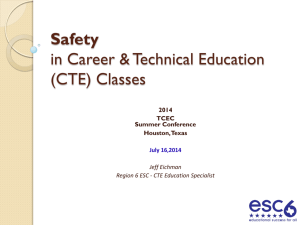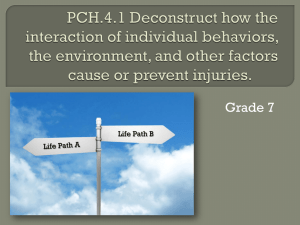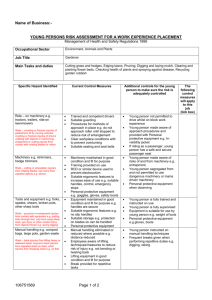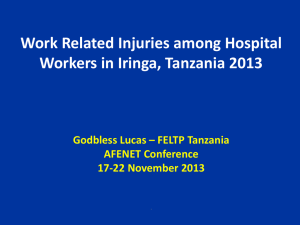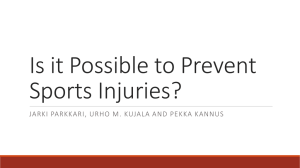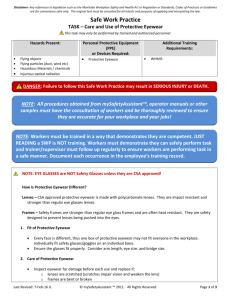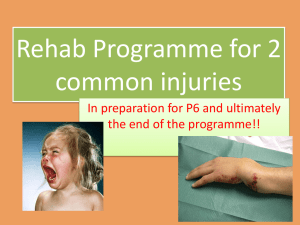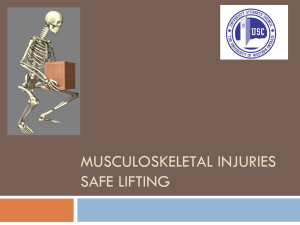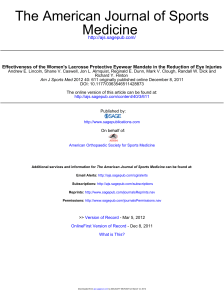True - South Dakota Optometric Society
advertisement
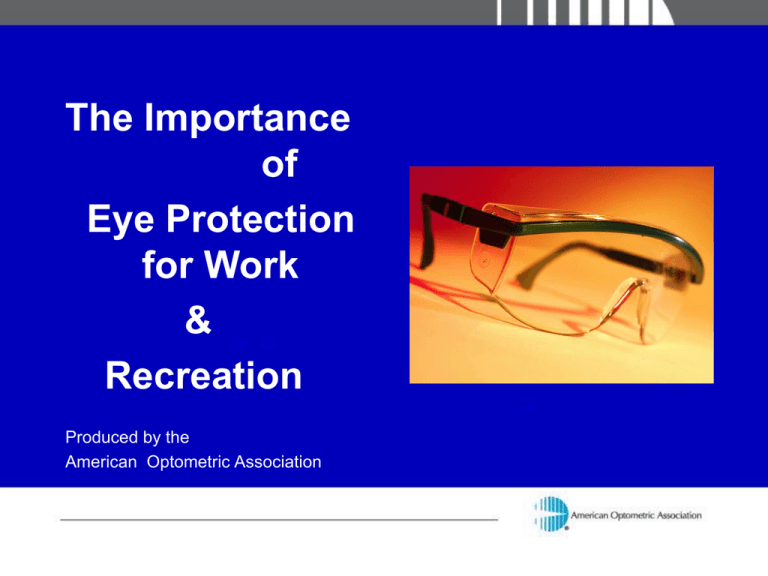
The Importance of Eye Protection for Work & Recreation Produced by the American Optometric Association Question 1: A majority of workplace eye injuries happen to workers who were not wearing adequate eye protection. True False Answer: True Approximately 60 percent of workers with eye injuries in a Bureau of Labor Statistics (BLS) study were not wearing the proper protective eyewear at the time of their injury. Most experts agree that 90 percent of all workplace eye injuries could be avoided if workers used appropriately designed and properly fitted protective eyewear on the job. Question 2: Chemical burns are the leading cause of eye injuries in the workplace. True False Answer: False In the same BLS study, chemical burns accounted for only 20 percent of the injuries. Nearly 70 percent of the eye injuries reported in the study came from flying debris, sparks and small objects striking the eye. Most of the objects were smaller than a pin head. Question 3: Employers are required to provide face and eye protection to workers at risk for job-related eye injuries. True False Answer: True The Occupational Safety and Health Administration (OSHA) standards require employers to provide suitable eye protection to workers. Question 4: Protective eyewear must be properly fitted to be effective. True False Answer: True The BLS study reported that 94 percent of the eye injuries which occurred while a worker was wearing protection were caused by sparks, debris or chemicals striking the eye from around or under the protective shield. Protective ocular equipment broke in only 13 out of 1,000, or 1.3 percent, of the cases. Question 5: Training employees on the proper use of protective eyewear can reduce workplace eye injuries. True False Answer: True A large majority of employers provide protective eye equipment to employees. However, a much smaller portion of employers provide training for the proper use of eyewear. Making sure workers use the proper protection in the proper situation is just as important as providing the protective equipment. Question 6: Construction workers are at a high risk of workplace eye injury. True False Answer: True The U.S. Consumer Product Safety Commission reported approximately 11,000 cases of emergency room treatments for eye injuries from welding equipment in 2001. The second most common cause of eye injuries treated in U.S. emergency rooms were power grinders and buffers, accounting for nearly 10,000 cases in 2001. Question 7: The brightness of a computer monitor should be adjusted based on the brightness of the surrounding area. True False Answer: True Eye strain is the most common eye problem for computer workers. Be sure to adjust the brightness of the computer monitor to the surroundings of the room, avoiding high levels of light. Computer users with farsightedness and presbyopia may experience increased eye fatigue due to extra focusing efforts. Question 8: If an object is embedded in a patient’s eye, do not cover the injured eye. True False Answer: False First, call for emergency help. After calling, the immediate first aid is to cover both eyes to prevent the injured eye from moving with the healthy one, and remain as calm as possible while waiting for help. Question 9: Workplace eye injuries result in millions of dollars of losses for employees and companies. True False Answer: True The U.S. Bureau of Labor Statistics reported over $924 million of workers’ compensation payments resulting from workplace eye injuries in 2001, and almost $4 billion of lost wages and productivity for the same year. However, many workplace eye injuries are preventable through the proper use and fitting of protective eye equipment. Question 10: New occupational tasks can result in new vision needs. True False Answer: True A change in one’s job tasks may require different focusing abilities. This is especially true for workers over 40 years old, whose eyes are susceptible to presbyopia, a natural loss of focusing ability. Be sure to visit your optometrist for a thorough eye exam to assess how your vision, job performance and job safety can be enhanced. Many people are conditioned to wear protective eyewear at work, but forget to wear it at home for tasks or projects such as: Yard work, wood working, hammering, & grinding In addition to foreign bodies, eyes need to be protected against: • Harmful ultraviolet (UV) rays choose quality sunglasses that block UV light; clear lenses can be treated with a coating to protect eyes from UV • Eyestrain due to computer use spectacles appropriate for particular workplace situation Prevent Injuries Before They Happen • Many eye injuries can be prevented. • The American Optometric Association encourages the use of protective eyewear that meet the standards set by the American Society for Testing and Materials (ASTM) and the American National Standards Institute (ANSI).
